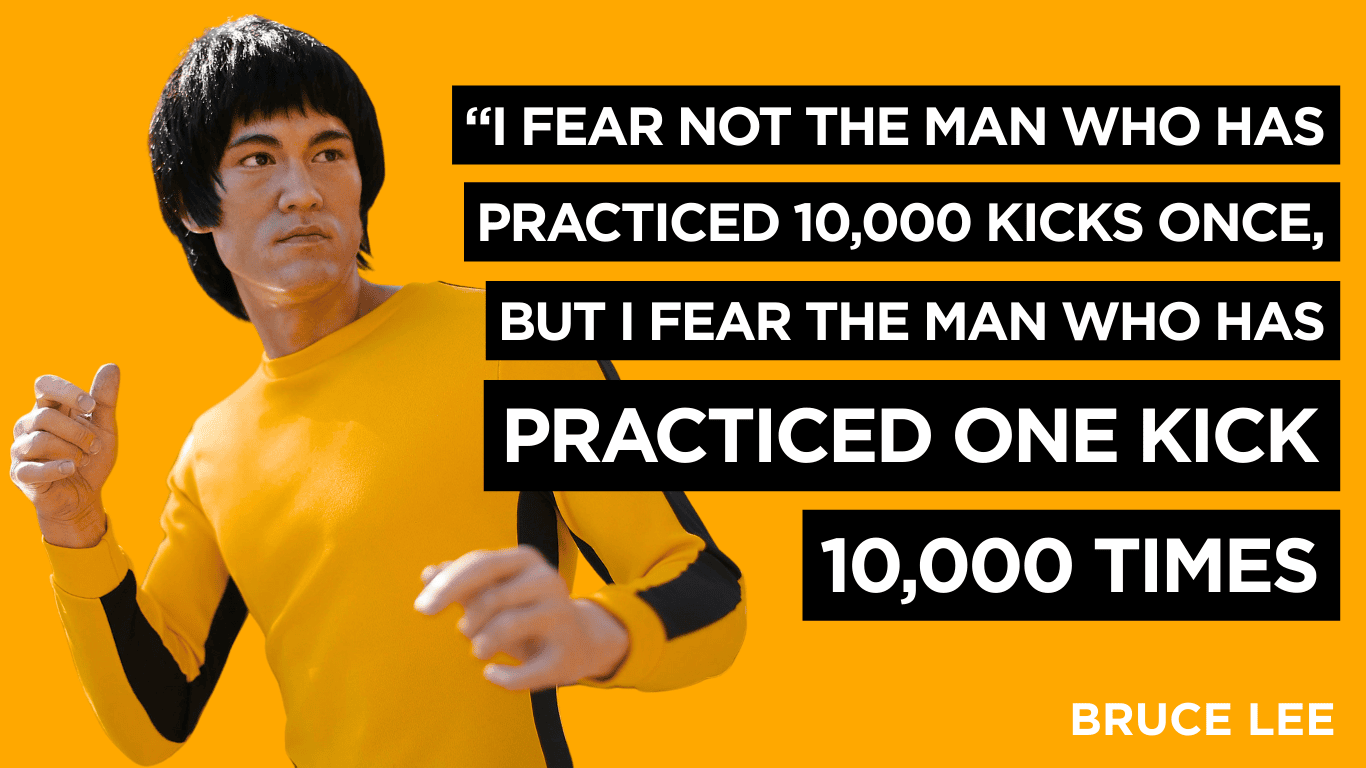

Stop Trying to Do It All—Pick One Platform and Master It
Let me just rip the Band-Aid off: marketing is a lot. Anyone who tells you otherwise hasn’t actually tried to do it. Between the content, the ads, the analytics, the emails, the SEO, the social posts, the trending sounds, the algorithm changes; hell, I’m tired just writing that list.
And here’s the kicker: it’s not even meant to be done by one person. A well-functioning marketing team in a mid-sized business? That’s a department. And each person in that department is usually a master of one thing, one channel, one skill, one specialty. They all come together like a puzzle to create the full picture.
Now Let's Be Real
If you’re a small business owner, you likely don’t have a marketing department. You might not even have a marketing person. Or maybe you hired someone like me, a full-stack marketing expert who can do everything. Sounds like a killer deal, right? One salary, all the skills. But here's the truth no one talks about: just because I can do everything doesn’t mean you should try to do everything.
I could technically build you a full marketing strategy across email, social, paid ads, content, and SEO. But if I’m the only person doing it, and you’re expecting major results across all channels, we’re both going to be frustrated. I’ll be losing more hair and sleep than I already do, and you’ll be wondering why your marketing “isn’t working.”
This is why I always recommend that small businesses focus on one marketing channel and do it really, really well.
SHORT ON TIME: GIVE ME THE GIST
How Many Marketing Channels Should You Use?
Marketing options multiply faster than TikTok trends, the pressure to “be everywhere” is real. Social media, email, SEO, blogs, podcasts, YouTube, paid ads—the list keeps growing, and so does the noise telling you that you have to be active on all of them to stay relevant. But here’s the truth no one wants to admit: that’s a trap. It’s the fastest route to burnout, diluted messaging, and throwing time and money into platforms that aren’t actually moving the needle for your business.
Focusing on one marketing channel isn’t playing small—it’s playing smart. It’s putting your energy where it actually counts and setting yourself up for traction and momentum, instead of chaos and stress. Here’s why that works:
- Depth over width: You can’t build deep trust or connection by spreading yourself thin across five platforms. But you can do that by going deep on one, by showing up consistently, listening to your audience, engaging with them, and refining your message based on what you learn.
- Consistency: Consistency beats perfection. And let’s be honest, it’s a lot easier to stay consistent on one platform you enjoy than five you dread. Consistent visibility builds trust, and trust is what drives results over time.
- Sanity: You’re likely a small team, or a team of one. Why pretend you have the bandwidth of a full-scale marketing department? Taking the pressure off to “be everywhere” gives you the freedom to actually enjoy what you're building and stay in the game longer.
- Strategic growth: This isn’t about limiting your future. It’s about building a solid foundation. Once you’ve mastered one platform, you’ll know what resonates, what converts, and where your people are. From there, you can scale intentionally, adding platforms with purpose, not panic.
Start with one channel, do it well, and let the results speak for themselves.


How to Choose Your One Marketing Platform
If you’re currently doing all the things; posting on five platforms, writing a blog, sending emails sporadically, and considering launching a podcast even though you’re already running on fumes, this is your invitation to stop. Seriously. Take a breath. The pressure to be everywhere at once is a myth that leads to burnout, not business growth. The truth is, most small businesses don’t need more marketing, they need more focused marketing.
So how do you decide where to focus? How do you choose which platform to keep and which ones to let go of (at least for now)? You don’t need fancy marketing jargon or a full-blown strategy retreat. You need clarity. Here’s how to start thinking like a strategic marketer without becoming one overnight:
1. Where is your audience already spending time?
This isn’t about where you like to hang out, it’s about where your ideal customer hangs out. Are they scrolling Instagram while waiting in the school pickup line? Are they reading blog posts late at night? Are they deep in industry conversations on LinkedIn? Pick the place where they’re already paying attention. It’s much easier to meet people where they are than to convince them to come to you elsewhere.
2. What platform do you genuinely enjoy using?
This might sound fluffy, but it’s not. If you dread logging into TikTok or feel awkward writing blog posts, don’t force it. Your energy is a critical part of your brand, and your audience can feel when you’re phoning it in. If you like showing up on Instagram Stories or writing long-form content on LinkedIn, lean into that. Marketing is already hard—don’t make it harder by choosing a channel that drains you.
3. How much time can you realistically commit?
Be honest. If you’ve only got five hours a week to dedicate to marketing, don’t plan for fifty. That means you likely can’t maintain a blog, a YouTube channel, daily IG posts, and weekly emails. And that’s okay. Choose the channel that fits your bandwidth and commit to showing up consistently there instead of inconsistently everywhere.
4. Where are you already seeing results?
Even if your marketing efforts have been scattered, take a look at the data. Is Pinterest quietly driving traffic to your site? Are people consistently replying to your emails? Is LinkedIn generating leads or podcast invites? Use your analytics, no matter how basic, as a guide. Focus on what’s already working, and double down on it.
5. What’s the real goal of the platform you’re using?
Not every platform needs to be a sales machine. Some are great for building brand awareness (like podcasts or Instagram), others are better for driving conversions (like email marketing or SEO). Define the role each platform plays in your customer journey. That way, you can judge its performance based on its purpose, not a generic ROI number.

Not All ROI Is Measured in Dollars
When we talk about ROI (return on investment), most people immediately think “money in, money out.” But if you’re a small business owner wearing all the hats, the more important ROI to measure is time and effort. Every hour you spend marketing is an hour not spent elsewhere in your business. You have to evaluate not just what a channel might earn you, but also what it costs you in content production, platform management, and mental bandwidth.
Take YouTube as a prime example. It’s a high-impact platform, but one with equally high production demands. Success on YouTube requires far more than just hitting “record.” You’ll need a decent camera setup, good lighting, reliable audio, editing software, and time to write scripts, film, and edit. Then there’s thumbnail design, SEO optimization, and promotion. This is why some small businesses get burned out—because they’re treating YouTube like a casual social platform instead of the full-scale content production engine that it is. If you’re not ready to treat it like a part-time job, it’s probably not the right place to start.
This thinking applies across the board. Instagram, podcasting, blogging—they all come with hidden costs. Before jumping into a platform, ask: how much time do I actually have to commit? What resources will this require? And what am I expecting in return—brand awareness, leads, engagement, or sales? If you don’t map the work-to-reward ratio, you’ll stretch yourself thin and see little progress. Start with one channel, master it, and choose based on where your audience is and what fits your capacity. Focused effort wins every time.
What I’m Doing and Why
Personally, I’m walking this talk. My primary goal with this site is to showcase my marketing expertise and open the door to new opportunities with businesses that need what I offer. But like many small business owners, I’m not working with endless hours in the day. That’s why I’ve chosen to invest in the long game: SEO. It’s not fast, but it’s strategic. Every blog post I publish, often 3,000 to 5,000 words, isn’t just content. It’s a mini case for why someone should trust me with their marketing. These articles are working around the clock, gradually attracting the right eyes and building a foundation of credibility.
And here’s the encouraging part. SEO is already working. It’s actively generating meetings. I’ve had new contacts reach out to me after discovering my content through organic search, people I hadn’t pitched, hadn’t emailed, hadn’t even heard of before. But, and this is important, those SEO-driven meetings haven’t yet surpassed the volume I’m generating through direct outreach. That’s okay. That’s expected. I’m not trying to flip a switch overnight.
The long-term goal is to reverse that dynamic. I want organic traffic and inbound inquiries to eventually outpace the hustle of manual outreach. Once that tipping point hits, that’s when I’ll expand. More content, maybe another channel. But until then, SEO is my lane. I’m committed to owning it fully, instead of spreading thin across five half-baked platforms. When my schedule evolves, my marketing strategy will too, but not a moment before it’s sustainable.
The BOttom Line
Pick one. Go all in. Be yourself. That’s not just a strategy, that’s survival. It’s the antidote to burnout, and the fastest route to real traction. Your people want to connect with you. The real you. Not the exhausted, constantly multitasking version who’s juggling five platforms and praying something sticks. They want the version that’s focused, engaged, and actually has something to say, not just something to post.
So, let’s stop glorifying the hustle and start prioritizing what actually works. It’s not about doing less just for the sake of doing less, it’s about creating space to be intentional, strategic, and human. When you simplify, you leave room for depth. You leave room for creativity. You leave room for results.
And if simplifying your strategy gives you enough margin to take a nap this week or knock out client work without panic? That’s not slacking, that’s smart, sustainable marketing. That’s marketing done right.



